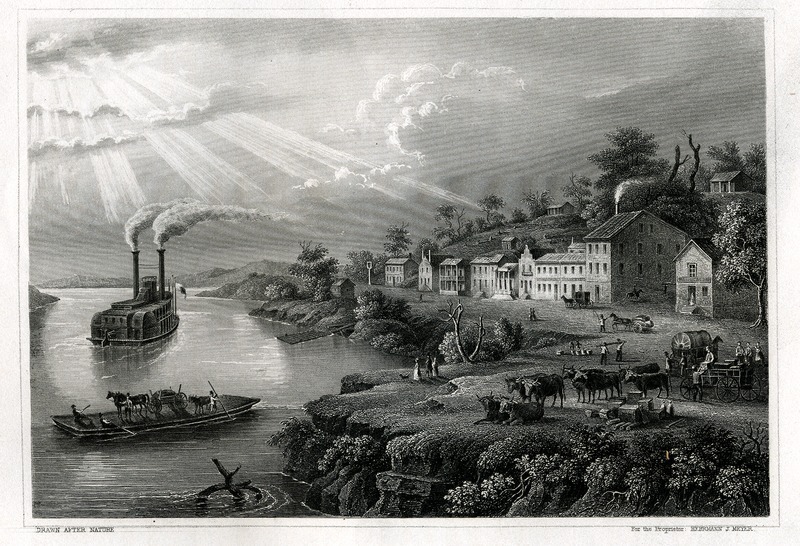In my experience, a large majority of the grant-funded work that humanists, librarians and archivists produce online comes to exist as a project based at a single institution. The fact that a practitioner or practitioners at an individual organization usually administer the awarded funds tends to reduce inter-institutional resources to those of a grantee and subcontractors. The Digital POWRR Project certainly began that way at Northern Illinois University, but it is now starting to become something different.
POWRR started with a grant from the Institute of Museum and Library Services that produced a white paper study of digital preservation challenges and potential solutions for librarians and archivists, especially at smaller institutions lacking large financial resources. Two subsequent grants produced a number of in-person professional development events offering practitioners practical knowledge about how to improve their institution's level of digital preservation capacity.
This year, the project has entered a new phase: it is officially a multi-institutional entity. Stacey Erdman, a member of the original Digital POWRR team at Northern Illinois University who moved to work at Arizona State University, recently received notification that she had received funds from the Institute of Museum and Library Services' Laura Bush Twenty-First Century Librarian program for a new project advancing digital preservation practices at under-resourced institutions. Project partners include the
Sustainable Heritage Network, the Black Metropolis Research Consortium,
the Association of Hawai’i Archivists, Northwest Archivists, Inc., and
Amigos Library Services. Stacey's project includes an innovative new component: training practitioners to provide peer assessments of other institutions' digital preservation capacities using the National Digital Stewardship Alliance's Levels of Digital Preservation.
Stacey remains a part of the POWRR team, helping to lead professional development events organized by Northern Illinois University, as well as other entities who invite POWRR to provide instruction.
Other POWRR instructors include Danielle Spalenka, who moved from Northern Illinois University Libraries to the Filson Club Historical Society; Lynne Thomas, who moved from Northern Illinois University Libraries to the University of Illinois at Urbana-Champaign; Martin Kong of Chicago State University (a partner organization in the study that produced the original POWRR white paper); Dorothea Salo, Faculty Associate at the University of Wisconsin iSchool; Sarah Cain, Curator of Rare Books and Manuscripts at Northern Illinois University Libraries; and Aaisha Haykal, who moved from Chicago State University to the College of Charleston (S.C.).
Since its inception, the Digital POWRR Project has drawn on the expertise of a number of practitioners situated at different institutions. Now it works through the sponsored project and grant administration organizations at multiple institutions as well.
I believe that this is possible because the Digital POWRR Project is largely organized around a common approach to digital preservation work, which its 2013 white paper originally articulated. At that time a number of large and/or wealthy institutions had made progress toward providing better preservation of digital materials in their collections, often by taking part in intensive (and expensive) professional development activities provided by well-regarded organizations in the emerging field. Realizing that these programs' large scope and cost often prevented many practitioners from benefiting from them, POWRR proposed a more flexible, "good-enough" approach to digital preservation. It emphasized making incremental progress toward better practices as measured by the NDSA's Levels of Digital Preservation., in part by introducing librarians and archivists to Open Source tools and encouraging them to assemble a set of applications best suited to their local workflow.
Although a perception that larger and wealthier organizations generally did a better job of preserving digital materials informed the original white paper, subsequent experience has shown that many representatives of R1 universities and well-funded private institutions remained quite confused about how to proceed toward digital preservation, and POWRR addressed their needs as well. More recently, a number of integrated, cloud-based digital preservation services have found an increasing foothold in the marketplace, and organizations that can afford their subscription fees have used them to good effect. This moves the POWRR Project back to its original emphasis on under-resourced organizations, as Stacey Erdman's recent award show.
In the future, the Digital POWRR Project looks forward to the opportunity to work through multiple organizations in order to provide this service. I would love to hear about other projects in the libraries and archives field, as well as digital humanities, that operate in a manner similar to that which I have described above.
